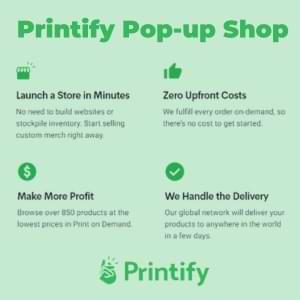How Does Email Marketing Work? Did you know that email marketing has an average return on investment (ROI) of 4,400%? Yes, you read that right! This high ROI is due to email’s easy automation, low barrier to entry, and minimal costs overall.
Email marketing is not only cost-effective but also highly profitable. If you’re wondering how it works and how you can leverage its power for your business, you’ve come to the right place.
In this article, we will walk you through the process of email marketing and show you how to effectively reach your target audience. Ready to unlock the true potential of email marketing? Let’s get started!
Key Takeaways: How Does Email Marketing Work
- Building a subscriber list is crucial for successful email marketing.
- Personalization and segmentation are key for engaging with the audience.
- Design plays a crucial role in grabbing attention and driving engagement.
- Tracking and analyzing email campaign performance provides valuable insights for optimizing future campaigns.
Building a Subscriber List
Building a subscriber list is like cultivating a garden, carefully nurturing and growing your audience over time. With email marketing, the first step is to gather a group of people who are interested in what you have to offer.
You can do this by creating opt-in forms on your website or landing pages, offering valuable content in exchange for their email address.
Once you have started building your subscriber list, it’s important to use email automation tools to streamline your communication process. These tools allow you to set up automated emails that are triggered based on specific actions or events. This helps you deliver timely and relevant content to your subscribers.
Segmentation is another key aspect of building a successful subscriber list. By categorizing your subscribers based on their interests or behaviors, you can send targeted emails that resonate with them on a personal level.
Personalization is crucial when it comes to email marketing. By addressing each subscriber by name and tailoring the content to their specific needs and preferences, you can increase engagement and build stronger relationships with your audience.
To save time and effort, consider using pre-designed email templates that are customizable to match your brand. These templates make it easy for you to create professional-looking emails without any design skills.
By following these strategies and consistently nurturing your subscriber list, you can effectively grow your audience and achieve better results from your email marketing efforts.
Creating Engaging Email Content
Crafting compelling email content is like painting a vivid picture that captivates your audience’s imagination. When it comes to email marketing, the success of your campaigns and newsletters heavily relies on creating engaging content that grabs attention and keeps readers hooked.
You want to ensure that your emails not only get opened but also lead to desired actions, such as clicking through to your website or making a purchase.
To achieve this, start by crafting subject lines that are intriguing and encourage recipients to open the email. Once they’re inside, make sure your content is informative, concise, and persuasive. Use a conversational tone and write in a way that feels personal and relatable.
To boost open rates and clickthrough rates, include visually appealing elements like images or videos. Break up the text into smaller sections with subheadings so it’s easier for readers to skim through. Incorporate relevant keywords throughout the email but avoid overusing them.
Lastly, don’t forget about conversion rates. Include clear call-to-action buttons or links that direct readers towards taking the desired action you want them to take.
Remember, when it comes to email marketing, compelling content is key. It’s what sets apart successful campaigns from those that go unnoticed in overcrowded inboxes.
Designing Eye-Catching Email Templates
Designing eye-catching email templates is like creating a beautiful symphony that entices and mesmerizes recipients, leading them to eagerly explore the content within. The design of an email template plays a crucial role in grabbing attention and driving engagement.
When it comes to email design, simplicity is key. A clean and organized layout with visually appealing elements can make your emails stand out in crowded inboxes.
Start by choosing a visually striking color palette that aligns with your brand identity. Use images sparingly but strategically, ensuring they’re relevant and high-quality. Incorporate eye-catching fonts that are easy to read on both desktop and mobile devices.
Another important aspect of designing email templates is creating compelling subject lines. These short phrases should grab attention, create curiosity, and encourage recipients to open your emails. Personalization can also play a significant role here, as using the recipient’s name or referencing their previous interactions can make the subject line more engaging.
To optimize email engagement, ensure that your templates are responsive across different devices. Test them on various platforms to guarantee they display correctly on smartphones, tablets, and computers.
By following these guidelines for designing eye-catching email templates, you can increase open rates, click-through rates, and overall customer engagement with your emails.
Personalizing Emails for Better Engagement
Tailoring your emails to individual recipients’ interests and preferences can significantly enhance their engagement and make them feel valued. One effective way to personalize your emails is by using email personalization tokens. These tokens allow you to dynamically insert personalized information into your emails, such as the recipient’s name, location, or recent purchase history. By including these personal touches, you show that you’ve taken the time to understand your customers and deliver relevant content.
Another powerful tool for personalization is email segmentation. This involves dividing your email list into smaller segments based on criteria like demographics, purchase behavior, or past interactions with your brand.
By sending targeted messages to each segment, you can deliver more relevant content that resonates with their specific needs and interests.
To measure the effectiveness of your personalized emails, it’s important to track email engagement metrics. These metrics provide valuable insights into how well your emails are performing, including open rates, click-through rates, and conversions. By analyzing this data, you can identify what resonates most with your audience and optimize future campaigns accordingly.
Lastly, incorporating email automation workflows allows you to create personalized journeys for each recipient based on their actions or inactions. This ensures that they receive timely and relevant messages at every stage of their customer journey.
By implementing these strategies for personalizing your emails – using tokens, segmentation, tracking metrics, and automation workflows – you can boost engagement levels among recipients while making them feel valued as individuals.
Segmenting Your Audience for Targeted Campaigns
By dividing your audience into smaller segments based on their unique characteristics and interests, you can create laser-focused campaigns that hit the bullseye every time. Segmenting your audience is a crucial step in email marketing as it allows you to tailor your messages to specific groups of people, increasing the chances of engagement and conversion.
Email targeting starts with effective email list management.
By collecting relevant data about your subscribers such as demographics, purchase history, or preferences, you can categorize them into different segments. This segmentation process enables you to send personalized content that resonates with each segment’s needs and desires.
Segmentation also plays a vital role in email lead generation. By understanding the specific pain points and motivations of different segments, you can create targeted lead magnets or offers that attract their attention and entice them to provide their contact information.
Furthermore, segmenting your audience helps optimize email conversion funnels. You can craft customized journeys for each segment, leading them through a series of emails designed to nurture relationships and drive conversions at different stages of the funnel.
Segmenting your audience is an essential strategy in email marketing. It allows you to deliver tailored messages that resonate with specific groups of people, resulting in higher engagement rates and better conversion outcomes. Incorporating this approach into your email campaigns will undoubtedly boost their effectiveness and ultimately drive business success.
Tracking and Analyzing Email Campaign Performance
Tracking and analyzing email campaign performance provides valuable insights into the effectiveness of your messages, allowing you to optimize future campaigns for maximum impact. By monitoring key metrics such as email deliverability, email analytics, email bounce rates, email unsubscribe rates, and email conversion tracking, you can gain a better understanding of how well your emails are performing.
Email deliverability refers to the ability of your emails to reach recipients’ inboxes successfully. By tracking this metric, you can identify any issues that may be impacting the delivery of your messages and take steps to improve it.
Email analytics provide detailed information about how recipients engage with your emails. This includes open rates, click-through rates, and conversions. Analyzing these metrics allows you to determine which elements of your emails are resonating with your audience and make data-driven decisions for future campaigns.
Additionally, tracking email bounce rates helps you identify invalid or inactive email addresses on your list. This information is crucial for maintaining a clean and engaged subscriber base.
Unsubscribe rates indicate the number of recipients who choose to opt-out of receiving further communications from you. Monitoring this metric allows you to assess the relevance and value of your content.
Email conversion tracking measures the actions taken by recipients as a result of receiving an email. Whether it’s making a purchase or signing up for a newsletter, understanding conversion rates helps gauge the success of your campaigns in achieving their intended goals.
In conclusion, tracking and analyzing key performance indicators associated with email marketing enables you to make informed decisions that enhance future campaign effectiveness. Utilize these insights wisely to continuously refine your messaging strategy for optimal results.
Optimizing Email Delivery and Open Rates
Want to ensure your carefully crafted emails never see the light of day in your recipients’ inboxes? Just ignore optimizing email delivery and open rates! When it comes to email marketing, getting your emails delivered and opened by your audience is crucial for success.
To optimize email delivery and open rates, there are a few key strategies you should consider.
- Implement drip campaigns. Drip campaigns allow you to send a series of targeted emails over time, keeping your audience engaged without overwhelming them. This can help improve open rates as recipients become more familiar with your brand and are more likely to open future emails.
- Focus on opt-in forms. Make sure you have clear and enticing opt-in forms on your website or landing pages. These forms should clearly communicate the value of subscribing to your emails and make it easy for visitors to sign up.
- Consider email frequency. Finding the right balance is important – too many emails can lead to unsubscribes while too few may result in decreased engagement. Test different frequencies and monitor the impact on open rates to find what works best for your audience.
- Pay attention to email deliverability rates. Ensure that you’re following best practices such as using a reputable email service provider, regularly cleaning up your subscriber list, avoiding spam triggers in subject lines or content, and monitoring bounce rates.
By optimizing email delivery and open rates through these strategies – implementing drip campaigns, focusing on opt-in forms, managing email frequency effectively, and maintaining good deliverability – you’ll increase the chances of reaching your intended audience and achieving better results with your email marketing efforts.
Conclusion
Email marketing can be a highly effective tool for businesses to reach and engage their audience. By following the steps outlined in this article, you can build a strong subscriber list, create engaging content, and design eye-catching templates.
Harness the power of email marketing to boost your business’s success today!
How Does Email Marketing Work? Learn the secrets of email marketing and discover how to skyrocket your business with this powerful tool. Click To Tweet
Note: Some links on this page are affiliate links meaning that if you click on my link and make a purchase, I will receive a small commission. It does not however affect the price you pay. Plus, it’s a great way to support me and the content I’m providing.







